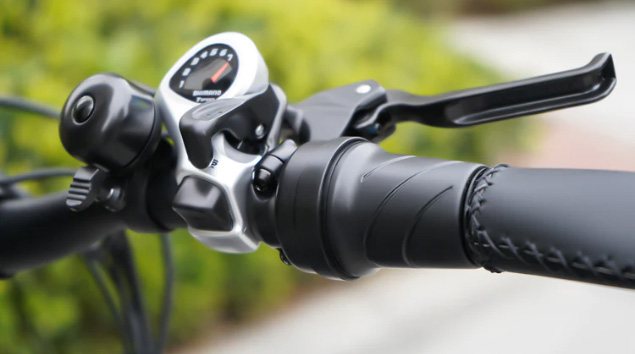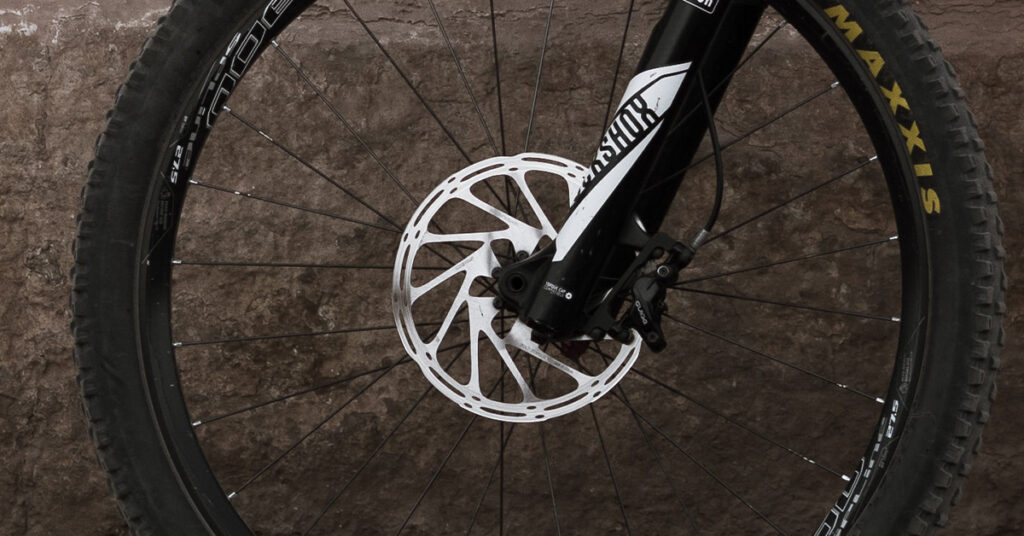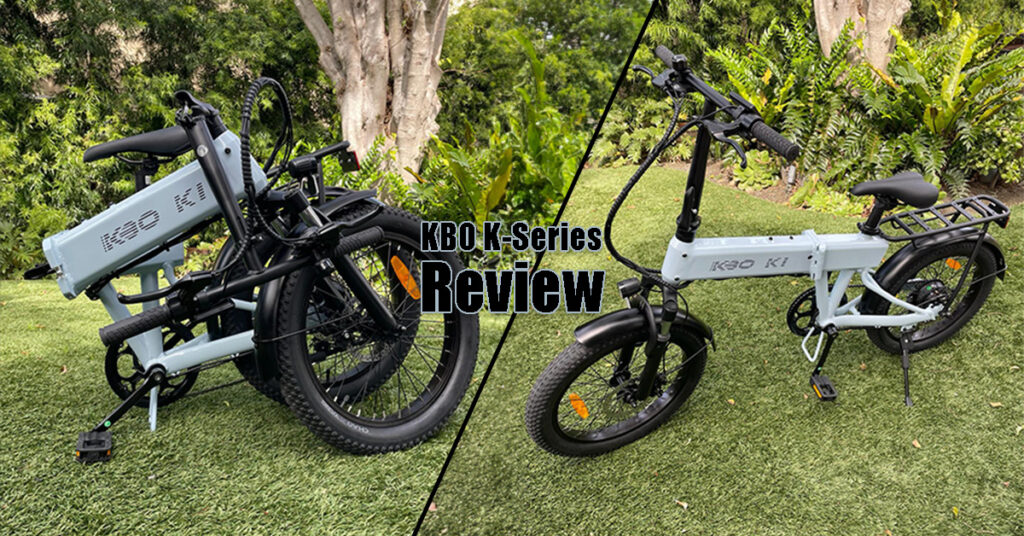As the popularity of electric bikes (e-bikes) continues to surge, understanding the mechanics behind these innovative machines becomes increasingly important.
One of the most crucial components of any e-bike is its braking system.
In this article, we will delve into the world of electric bike brakes, exploring their types, how they work, and their significance in ensuring a safe and enjoyable ride.
Types of Brakes Used in E-Bikes
E-bikes typically employ one of three types of brakes: mechanical disc brakes, hydraulic disc brakes, and rim brakes. Each of these systems has its unique characteristics, advantages, and disadvantages. The choice between them often hinges on the specific needs and preferences of the rider.

- Mechanical Disc Brakes: Also known as cable-actuated brakes. These systems operate by pulling a cable when the brake lever is squeezed. This action forces the brake pads to clamp down on the brake rotor, creating friction that slows down the bike. Mechanical disc brakes are generally more affordable and easier to maintain than other types of brakes. But they require more effort to operate and may not provide as much stopping power.
- Hydraulic Disc Brakes: These brakes work on a similar principle to mechanical disc brakes, but instead of a cable, they use a sealed fluid system. When the brake lever is squeezed, it pushes fluid through the system, which then forces the brake pads onto the rotor. Hydraulic disc brakes offer more stopping power and better modulation than mechanical disc brakes. But they are more expensive and can be more challenging to maintain.
- Rim Brakes: These are the traditional type of bike brake, where the brake pads squeeze directly onto the wheel’s rim. While rim brakes are generally the cheapest option, they can be less effective in wet or muddy conditions and can cause wear on the wheel rim over time.
How Each Brake Type Actually Work?
Now, let’s delve a little deeper into how these brakes work. When you squeeze the brake lever on your e-bike, it activates the brake system – whether that’s pulling a cable in a mechanical disc brake, pushing fluid in a hydraulic system, or squeezing the rim in a rim brake. This action causes the brake pads to create friction against the rotor (for disc brakes) or the rim (for rim brakes), which slows down the bike.
The effectiveness of this friction – and therefore the effectiveness of the brake – depends on several factors. These include:
- the material and condition of the brake pads and rotor
- the alignment of the brake system
- and the conditions you’re riding in.
For example, wet or muddy conditions can reduce the effectiveness of rim brakes and mechanical disc brakes, while hydraulic disc brakes tend to perform better in these conditions.
Which Brakes for E-Bikes are the Best?
Each type of brake system has its unique advantages and disadvantages, and understanding these can help you make an informed decision about which is best for your e-bike.

- Mechanical Disc Brakes: These brakes are generally more affordable and easier to maintain than hydraulic disc brakes. They are also easier to adjust and repair, as they don’t require any special tools or knowledge of hydraulic systems. However, they require more effort to operate and may not provide as much stopping power, especially in wet or muddy conditions.
- Hydraulic Disc Brakes: Hydraulic brakes offer more stopping power and better modulation than mechanical disc brakes. They also perform better in wet or muddy conditions and require less effort to operate. However, they are more expensive and can be more challenging to maintain and repair, as they require knowledge of hydraulic systems and special tools.
- Rim Brakes: Rim brakes are generally the cheapest option and are easy to inspect and adjust. However, they can be less effective in wet or muddy conditions, can cause wear on the wheel rim over time, and may not provide as much stopping power as disc brakes.
Best brakes for e-bikes are hydraulic disc brakes.
E-Bike Specific Brakes vs Standard Bicycle Brakes
While standard bicycle brakes and e-bike specific brakes may seem similar at first glance, there are key differences that set them apart.
Standard bicycle brakes are designed for lighter, slower-moving bicycles and focus on providing adequate stopping power for these conditions.
On the other hand, e-bikes are heavier due to their motor and battery, and they can reach higher speeds, especially those classified as Class 3 e-bikes. This means that e-bike specific brakes need to provide greater stopping power and control to ensure rider safety.
E-bike specific brakes often feature larger rotors and more robust calipers to handle the increased demands. They also incorporate electronic features such as a kill switch that cuts power to the motor when the brakes are applied, preventing any conflict between the motor’s propulsion and the brake’s stopping force. Some e-bike brakes even offer regenerative braking, which can feed energy back into the battery during braking, although this feature is not yet widely adopted due to its limited efficiency.
In essence, while standard bicycle brakes and e-bike specific brakes share the same fundamental purpose of controlling speed and ensuring safe stops, e-bike brakes are designed to handle the unique challenges posed by the increased weight and speed of e-bikes.
Safety Features of Electric Bike Brakes
In addition to understanding the types of brakes and their mechanisms, it’s also important to consider the safety features associated with electric bike brakes. These include brake levers, brake sensors, and brake performance in different conditions.
- Brake Levers: These should be easy to reach and operate. Some e-bikes feature adjustable brake levers, allowing you to set them to a position that is comfortable for you.
- Brake Sensors: Some e-bikes have sensors that cut off the motor power when the brakes are applied, providing an extra layer of safety.
- Brake Performance in Different Conditions: Disc brakes, especially hydraulic disc brakes, tend to perform better in wet or muddy conditions than rim brakes. If you often ride in such conditions, this is an important factor to consider.
What is the Kill Switch and Why it’s Needed for E-Bikes?
In the realm of e-bikes, the kill switch is a vital safety feature that distinguishes e-bike specific brakes from traditional bike brakes.
This simple electronic or mechanical switch, mounted on the brake lever, detects even the slightest application of the brakes. The moment you apply the brakes, the kill switch springs into action, cutting power to the motor immediately.

This feature is particularly crucial for powerful Class 3 e-bikes capable of reaching speeds up to 28 mph and Class 2 throttle-controlled e-bikes. Without a kill switch, a rider could inadvertently apply the brakes and throttle simultaneously, leading to potentially dangerous situations.
The kill switch also serves as a failsafe should your bike’s controller fail or throttle stick open. In such cases, without a kill switch, you would be along for the ride until the battery dies or you manage to force the bike to stop, risking motor burnout.
The presence of a kill switch underscores the importance of e-bike brakes not just in slowing down or stopping the bike, but also in ensuring the safe and seamless operation of the e-bike’s integrated systems. It’s a testament to the intricate balance between power and control in e-bikes, and highlights the pivotal role of brakes in maintaining this balance.
Maintenance and Troubleshooting Ebike Brakes
Regular maintenance and troubleshooting of electric bike brakes are also crucial for ensuring their optimal performance and longevity. This includes checking the brake pads for wear, adjusting the brake sensitivity, and replacing the brake fluid as needed.
Here are some tips:
- Check the Brake Pads: Brake pads wear down over time and need to be replaced. If your brakes are squeaking or not stopping the bike as effectively as they used to, it may be time to replace the brake pads.
- Adjust the Brake Sensitivity: If your brakes are too sensitive or not sensitive enough, you can adjust the brake cable tension to change this.
- Replace the Brake Fluid: If you have hydraulic disc brakes, the brake fluid will need to be replaced periodically. This is a more complex task that may require professional help.
Read also: Electric Bike Maintenance Tips
Advanced Brake Technologies
As e-bike technology continues to evolve, so do the braking systems that keep riders safe. Here are a couple of advanced brake technologies that are becoming increasingly common in e-bikes:
- ABS (Anti-lock Braking System): Originally developed for cars and motorcycles, ABS is now being adapted for use in e-bikes. ABS prevents the wheels from locking up and skidding during hard braking, improving control and reducing stopping distances.
- Regenerative Braking: This technology, commonly used in electric cars, allows the e-bike to recover energy during braking and feed it back into the battery. While it can increase the range of the e-bike, it’s worth noting that the amount of energy recovered is usually quite small. Although the regen technology is still quite uncommon, some Rad Power Bikes models use it.
Why Isn’t Regenerative Braking More Popular on E-Bikes?
Regenerative braking is a common feature in electric cars. However, it’s not as prevalent in the e-bike industry.
The primary reason for this is the way bicycles are ridden compared to cars. Regenerative braking systems require the rider to apply the brakes to recoup power. However, cyclists often prefer to coast, especially when going downhill, to gain speed rather than brake.
This means the opportunities for regenerative braking are less likely to be taken advantage of on a bicycle compared to a car, where speed limits and traffic often necessitate more frequent braking.
Furthermore, regenerative braking is limited to specific types of hub motors and cannot be easily applied to mid-drive e-bike systems. The energy recovery efficiency of these systems is also relatively low due to the brief and infrequent nature of braking on bicycles.
Therefore, while regenerative braking is an intriguing concept, its practical application and benefits on e-bikes are currently limited, explaining its lack of popularity in the e-bike market.
Choosing the Right Brakes for Your Electric Bike
When choosing the right brakes for your e-bike, consider the following factors:
- Riding Conditions: If you often ride in wet or muddy conditions, disc brakes, especially hydraulic disc brakes, may be a better choice than rim brakes.
- Maintenance: Mechanical disc brakes and rim brakes are generally easier to maintain than hydraulic disc brakes, which require special tools and knowledge of hydraulic systems.
- Cost: Rim brakes are usually the cheapest option, followed by mechanical disc brakes and hydraulic disc brakes.
Other Features to Look for in E-Bike Brakes
- Brand: The brand of your e-bike brakes can significantly impact their performance and reliability. Renowned brands like Tektro, and Magura are known for their high-quality products and offer a range of brakes suitable for different types of e-bikes. These brands also provide better after-sales service and easier access to replacement parts.
- Number of Pistons: The number of pistons in a brake caliper can influence the brake’s stopping power and modulation. Single-piston brakes are common in entry-level e-bikes and are sufficient for casual riding. However, for more demanding riding conditions or heavier e-bikes, dual-piston or even quad-piston brakes provide superior stopping power and heat dissipation.
- Rotor Size: The size of the brake rotor plays a crucial role in braking performance. Larger rotors offer more surface area for the brake pads to grip, resulting in better stopping power and heat dissipation. However, they also add weight to the bike and may not be necessary for lighter e-bikes or less demanding riding conditions.
- Brake Light Activation: Some e-bike brakes come with an integrated switch that activates a brake light when the brakes are applied. This feature enhances safety, especially when riding in low-light conditions or heavy traffic, by alerting other road users of your intention to slow down or stop.
- Motor Cutoff: This feature, also known as a kill switch, cuts off power to the motor when the brakes are applied. It ensures that the motor doesn’t fight against the brakes when you’re trying to stop, providing safer and more controlled stops. It’s particularly important for powerful e-bikes that can reach high speeds.
Read also: How to Choose Electric Bike?
Brands That Produce E-Bike Specific Brakes
- Tektro/TRP
- SRAM
- Magura
- NUTT
- Zoom
What is the Correct Braking Style with an E-Bike

Braking correctly on an e-bike is crucial for safety and control. Unlike traditional bikes, e-bikes are heavier and can reach higher speeds, which can affect braking dynamics. Here are some tips for effective braking on an e-bike:
- Use Both Brakes: Always use both the front and rear brakes together. This distributes the braking force and helps maintain control and stability. Using only one brake can cause the bike to skid or tip over.
- Brake Early: Due to their higher weight and speed, e-bikes require a longer distance to stop compared to traditional bikes. Therefore, it’s important to start braking earlier than you would on a regular bike.
- Modulate Your Brakes: Don’t just grab the brakes hard. Apply them gradually to avoid skidding or flipping over. This is especially important when riding downhill or on slippery surfaces.
- Practice Emergency Braking: Knowing how to stop quickly and safely in an emergency is crucial. Practice emergency braking in a safe, controlled environment to get a feel for how your e-bike responds.
Remember, every e-bike is different, and the correct braking style can depend on factors like the type of brakes, the weight of the bike, and the riding conditions. Always take the time to familiarize yourself with your e-bike’s braking system and how it performs in different situations.
Future Trends in Electric Bike Brakes
As we’ve seen, the world of electric bike brakes is complex and rapidly evolving. Whether you’re choosing between mechanical disc brakes, hydraulic disc brakes, or rim brakes, it’s important to consider your specific needs and preferences, as well as the riding conditions you’ll most often encounter.
Looking to the future, we can expect to see more advanced technologies like ABS and regenerative braking become increasingly common in e-bikes. As these technologies become more widespread, they have the potential to make e-bikes safer, more efficient, and more enjoyable to ride.
Final Words
To sum it up, the braking system is a crucial component of any e-bike. Understanding how different types of brakes work, their advantages and disadvantages, and how to maintain them can help you make the most of your e-bike and ensure a safe and enjoyable ride.
Whether you’re a seasoned e-bike rider or a newcomer to the world of e-bikes, we hope this guide to ebike brakes has provided you with valuable insights into the world of electric bike brakes. Happy riding!

The founder and the editor-in-chief of the Electric Wheelers blog. With a previous background in IT, sales, and video editing, he has now established himself as a micromobility expert.
He bought his first e-scooter over 5 years ago and since then has owned dozens of e-scooters and e-bikes. His deep understanding of the technical aspects, coupled with a keen eye for market trends, enables him to provide insightful and reliable content.
His commitment to promoting sustainable and efficient urban mobility solutions has made him a respected voice in the community of eco-friendly transportation enthusiasts.




